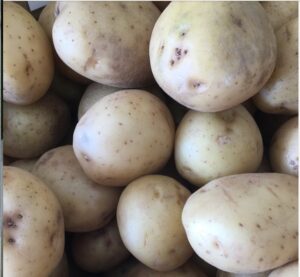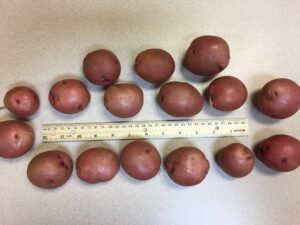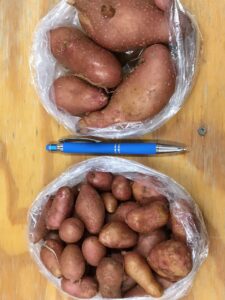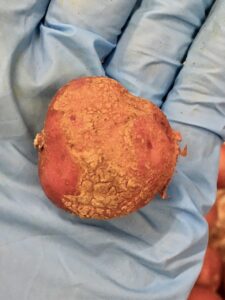Postharvest Produce Guide – Potato
go.ncsu.edu/readext?919120
en Español / em Português
El inglés es el idioma de control de esta página. En la medida en que haya algún conflicto entre la traducción al inglés y la traducción, el inglés prevalece.
Al hacer clic en el enlace de traducción se activa un servicio de traducción gratuito para convertir la página al español. Al igual que con cualquier traducción por Internet, la conversión no es sensible al contexto y puede que no traduzca el texto en su significado original. NC State Extension no garantiza la exactitud del texto traducido. Por favor, tenga en cuenta que algunas aplicaciones y/o servicios pueden no funcionar como se espera cuando se traducen.
Português
Inglês é o idioma de controle desta página. Na medida que haja algum conflito entre o texto original em Inglês e a tradução, o Inglês prevalece.
Ao clicar no link de tradução, um serviço gratuito de tradução será ativado para converter a página para o Português. Como em qualquer tradução pela internet, a conversão não é sensivel ao contexto e pode não ocorrer a tradução para o significado orginal. O serviço de Extensão da Carolina do Norte (NC State Extension) não garante a exatidão do texto traduzido. Por favor, observe que algumas funções ou serviços podem não funcionar como esperado após a tradução.
English
English is the controlling language of this page. To the extent there is any conflict between the English text and the translation, English controls.
Clicking on the translation link activates a free translation service to convert the page to Spanish. As with any Internet translation, the conversion is not context-sensitive and may not translate the text to its original meaning. NC State Extension does not guarantee the accuracy of the translated text. Please note that some applications and/or services may not function as expected when translated.
Collapse ▲Potatoes may be white or red skinned, as well as yellow fleshed varieties (ie., Yukon Gold), or specialty varieties such as purple fingerling. NC grown potatoes tend to be immature or “new” potatoes, harvested early in summer. At harvest, handle potatoes with care as skins are highly delicate. Injury can result in disease and rot during storage. After digging, allow potatoes to dry to toughen skin before handling. Harvest when soil is dry to lessen risk of injury, disease, abrasion.
Cure for 8 days at 59°F, 95% RH. New potatoes are typically not stored for long periods. Ventilation is important. Package with boxes or plastic bags with vent holes.
Quality Specifications
Potatoes should be firm, clean, skin is smooth with few defects. Shapes are standard for the type and uniform. Size categories, by diameter: A (2.5″), B (1.5″-2.25″) and C (less than 1.5″). Smaller sizes (which range from “D” to “H”, 1/4″-1/2″) are for specific, specialized markets. USDA “Creamer”: minimum 3/4″ diameter.
Common Quality Issues
Potatoes should have reasonable uniformity in size. USDA states no more than 5% smaller or 10% larger than specified size.
USDA specs re: “Elephant hide”; “damage” – over 10% area of potato, “severe damage” if affecting over 25% of surface.






